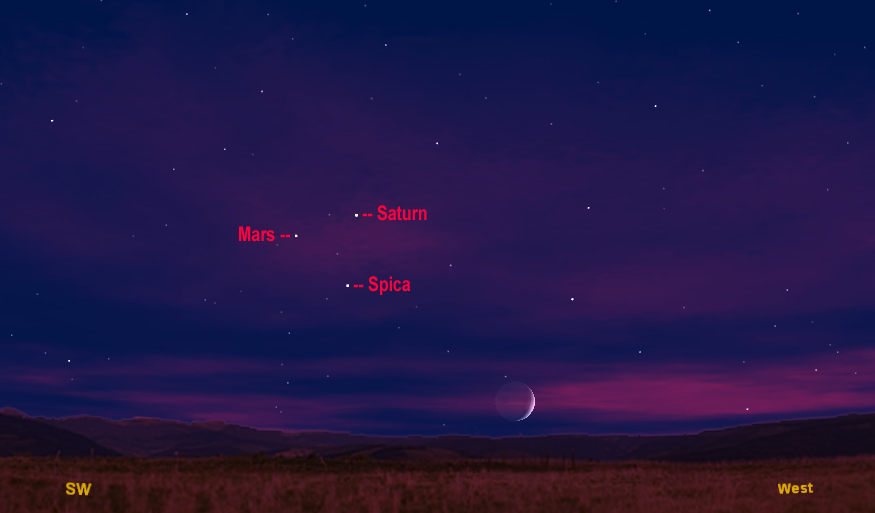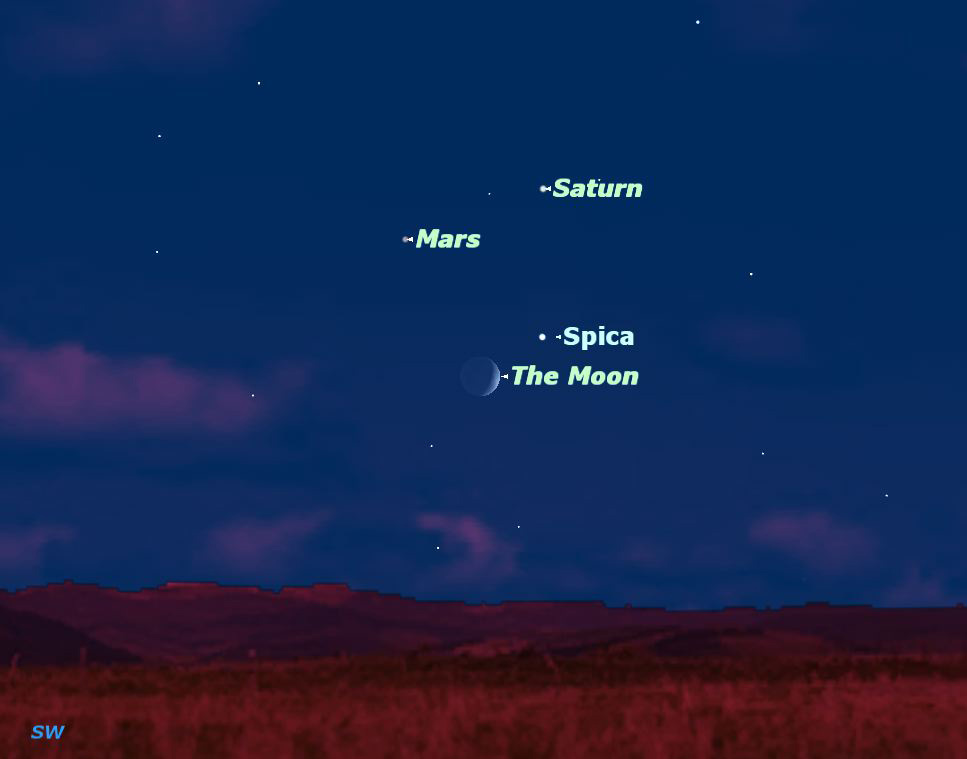Spot Mars in the Night Sky Before It Disappears

NASA's Curiosity rover is set to take its first drive on Mars this week, but you don't have to travel millions of miles to see the Red Planet. Earthbound observers can spot the Red Planet in the night sky, too. You just have to know where to look..
Curiosity landed on Mars on Aug. 5, and lucky for night sky observers, the planet has also been putting on something of a cosmic show.
Currently, Mars appears low in the western sky shortly after sunset, but it will be increasingly more difficult to spot the Red Planet as we approach the end of the year.
"Mars will continue to be an evening object right on through the end of this year; it will indeed be dropping lower into the evening twilight but this process will be very slow," said Joe Rao, SPACE.com's night sky columnist.
Eventually, Marswill drop too low for us to see it in the evening sky, but for now, keen observers with telescopes may be able to pick out the Red Planet in the western sky.

"Not until late January will low altitude and the increasingly bright twilight sky finally render it invisible from our view," Rao explained.
To find Mars, look low in the western sky just after sunset. The planet will be roughly 30 degrees above the horizon. For reference, your clenched fist held at arm's length measures about 10 degrees.
Get the Space.com Newsletter
Breaking space news, the latest updates on rocket launches, skywatching events and more!
"Saturn, Mars and the bright star Spica form a trio almost all month long," Jane Houston Jones, a scientist at the Jet Propulsion Laboratory in Pasadena, Calif., said in a NASA video.
Through a telescope, observers should be able to differentiate between these three cosmic bodies because of their colors.
"Saturn appears golden, Spica is blue-white, and Mars is rusty red," Jones explained.
On Aug. 21, the moon will pass near Mars, Saturn and Spica, which may help some observers spot the trio. The next time the moon will shine close to Mars will be on the evening of Sept. 19, Rao said.
Editor's note: If you snap any amazing skywatching photos that you'd like to be considered for use in a story or gallery, please send them to SPACE.com managing editor Tariq Malik at tmalik@space.com.
You can follow SPACE.com on Twitter @Spacedotcom. We're also on Facebook & Google+.
Join our Space Forums to keep talking space on the latest missions, night sky and more! And if you have a news tip, correction or comment, let us know at: community@space.com.

Space.com is the premier source of space exploration, innovation and astronomy news, chronicling (and celebrating) humanity's ongoing expansion across the final frontier. Originally founded in 1999, Space.com is, and always has been, the passion of writers and editors who are space fans and also trained journalists. Our current news team consists of Editor-in-Chief Tariq Malik; Editor Hanneke Weitering, Senior Space Writer Mike Wall; Senior Writer Meghan Bartels; Senior Writer Chelsea Gohd, Senior Writer Tereza Pultarova and Staff Writer Alexander Cox, focusing on e-commerce. Senior Producer Steve Spaleta oversees our space videos, with Diana Whitcroft as our Social Media Editor.









